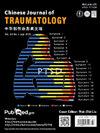Comparison of hook plates vs. locking plates for Neer type IIB fractures of lateral end clavicle: A systematic review
IF 1.9
4区 医学
Q2 ORTHOPEDICS
引用次数: 0
Abstract
Purpose
Surgical management of the lateral end of clavicle fractures has been a challenge for orthopedic surgeons considering the high rate of non-union. There has been no right and wrong answer to these types of fractures and many methods discussed in the literature, but the 2 most used bony procedures are hook plate and locking plate with or without the use of supplementary soft tissue procedures. The available evidence, in this case, is scarce with questionable reliability. The idea of this systemic review is to promote evidence-based practice when choosing between the 2 implants for this fracture. This study aims to review the results by performing a systemic review of the literature comparing the results of locking plate vs. hook plate for the lateral end of clavicle fracture fixation with an emphasis on outcome and associated complications.
Methods
A search of the literature was made with the keyword “clavicle” in PubMed/Ovid Medline/Embase and University of Edinburgh online library “discover Ed”. A total of 4063 articles were identified including case series (with at least 3 cases) and review articles focusing on locking plate alone, comparisons of locking plate and hook plate, or hook plate alone. Articles were excluded if they were not published in English, focused on pediatric studies, or consisted only of book chapters. Studies examining tension band wiring, soft tissue procedures for fracture fixation, arthroscopic-assisted procedures, additional soft tissue procedures along with plate fixation, and fracture dislocation of the lateral end of the clavicle were also excluded. The search was then narrowed down to 21 articles after consideration of inclusion and exclusion criteria. A detailed review of the surgical methodology further excluded additional soft tissue procedures, resulting in a final selection of 15 studies. The quality of the studies was assessed using the Modified Coleman Score by the authors.
Results
A total of 15 studies related to Neer type II fracture met the inclusion criteria. However, 2 other studies also included type V fracture as well. The mean age of patients in these studies was 32 years. The mean follow-up period was 24.3 months (ranging from 6 to 65 months). The time of radiological union was documented from 2 to 4.5 months. Constant and disabilities of arm, shoulder, and hand scores were most used as the criteria for patient outcomes. The size of the lateral fragment that can accommodate/provide bicortical fracture was documented in only 3 studies. The mean incidence of removal of hook plate was 86.9%. In contrast, the mean incidence of removal of locking plate was 27.0%. Superficial wound infection was documented in 5 studies and deep wound infection was seen in 1 study. The mean union rate for hook plate was 97.0% compared to 100% for locking plate. Complications associated with hook plate have been documented in 11 studies. The most commonly reported incidence of complication was acromial osteolysis. The quality of studies was assessed using modified Coleman score. Other than 2 studies that were considered for the study that met the “fair” standard all of them were considered “poor” based on the modified Coleman score.
Conclusion
Both hook plate and locking plate provide acceptable operative treatment options for the lateral end of clavicle fracture. However, a consideration of surgeons’ experience, the likelihood of a second operation, and the size of the lateral fragment should be considered when choosing between the 2 types of implants.
钩钢板与锁定钢板治疗IIB型锁骨外端骨折的比较:系统综述。
目的:锁骨外侧骨折的手术治疗一直是骨科医生面临的一个挑战,因为锁骨骨折的不愈合率很高。这些类型的骨折没有正确和错误的答案,文献中讨论了许多方法,但最常用的两种骨手术是钩钢板和锁定钢板,或不使用辅助软组织手术。在这种情况下,现有的证据很少,可靠性也有问题。该系统综述的目的是促进在选择两种植入物治疗该骨折时的循证实践。本研究旨在通过对锁骨骨折外侧端锁定钢板与钩形钢板固定结果的比较文献进行系统回顾,并着重于结果和相关并发症。方法:在PubMed/Ovid Medline/Embase和爱丁堡大学在线图书馆“discover Ed”中以“锁骨”为关键词进行文献检索。共鉴定出4063篇文章,包括病例系列(至少3例)和单独锁定钢板、锁定钢板与钩钢板比较、单独钩钢板的综述文章。如果文章不是用英文发表的,重点是儿科研究,或只包括书籍章节,则排除。检查张力带连接、骨折固定的软组织手术、关节镜辅助手术、附加的软组织手术和钢板固定以及锁骨外侧骨折脱位的研究也被排除在外。在考虑纳入和排除标准后,搜索范围缩小到21篇文章。对手术方法的详细回顾进一步排除了额外的软组织手术,最终选择了15项研究。研究的质量由作者使用修改的Coleman评分进行评估。结果:共有15项与Neer II型骨折相关的研究符合纳入标准。然而,另外2项研究也包括了V型骨折。这些研究中患者的平均年龄为32岁。平均随访24.3个月(6 ~ 65个月)。放射愈合时间为2 ~ 4.5个月。手臂、肩部和手部的恒定和残疾得分被用作患者预后的标准。只有3项研究记录了能够容纳/提供双皮质骨折的侧块的大小。钩板取出的平均发生率为86.9%。相比之下,锁定钢板取出的平均发生率为27.0%。5项研究记录了浅表伤口感染,1项研究发现了深部伤口感染。钩形钢板的平均愈合率为97.0%,而锁定钢板的平均愈合率为100%。与钩钢板相关的并发症已在11项研究中得到证实。最常见的并发症是肩峰骨溶解。研究质量采用改良的Coleman评分进行评估。除了两项研究符合“公平”标准外,根据修改后的Coleman评分,所有研究都被认为是“差”。结论:钩钢板与锁定钢板均为锁骨外侧骨折的手术治疗选择。然而,在选择两种类型的植入物时,应考虑外科医生的经验、第二次手术的可能性和外侧碎片的大小。
本文章由计算机程序翻译,如有差异,请以英文原文为准。
求助全文
约1分钟内获得全文
求助全文
来源期刊

Chinese Journal of Traumatology
ORTHOPEDICS-
CiteScore
3.80
自引率
4.80%
发文量
1707
审稿时长
28 weeks
期刊介绍:
Chinese Journal of Traumatology (CJT, ISSN 1008-1275) was launched in 1998 and is a peer-reviewed English journal authorized by Chinese Association of Trauma, Chinese Medical Association. It is multidisciplinary and designed to provide the most current and relevant information for both the clinical and basic research in the field of traumatic medicine. CJT primarily publishes expert forums, original papers, case reports and so on. Topics cover trauma system and management, surgical procedures, acute care, rehabilitation, post-traumatic complications, translational medicine, traffic medicine and other related areas. The journal especially emphasizes clinical application, technique, surgical video, guideline, recommendations for more effective surgical approaches.
 求助内容:
求助内容: 应助结果提醒方式:
应助结果提醒方式:


